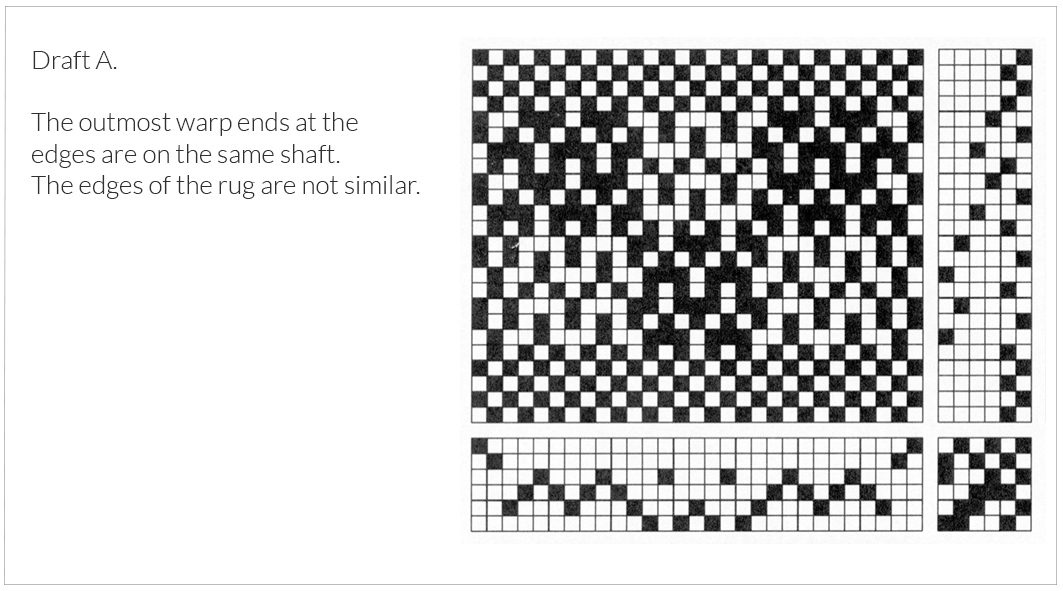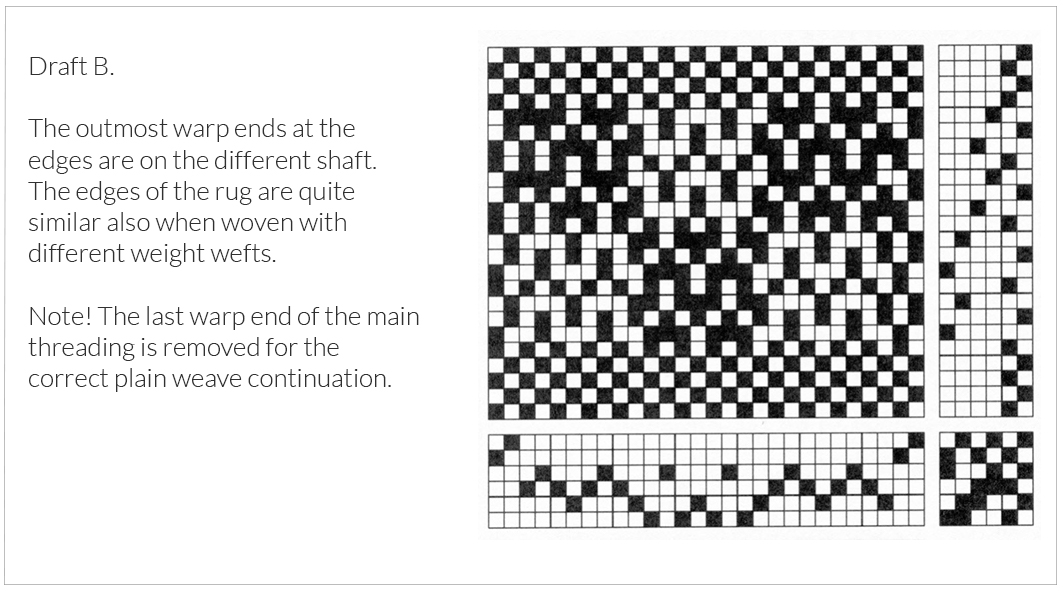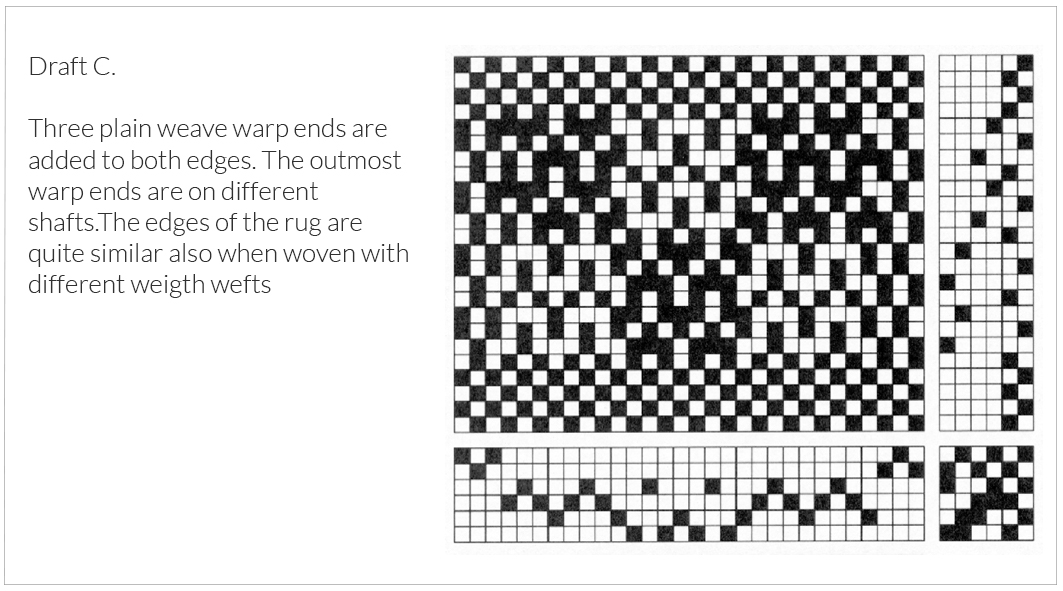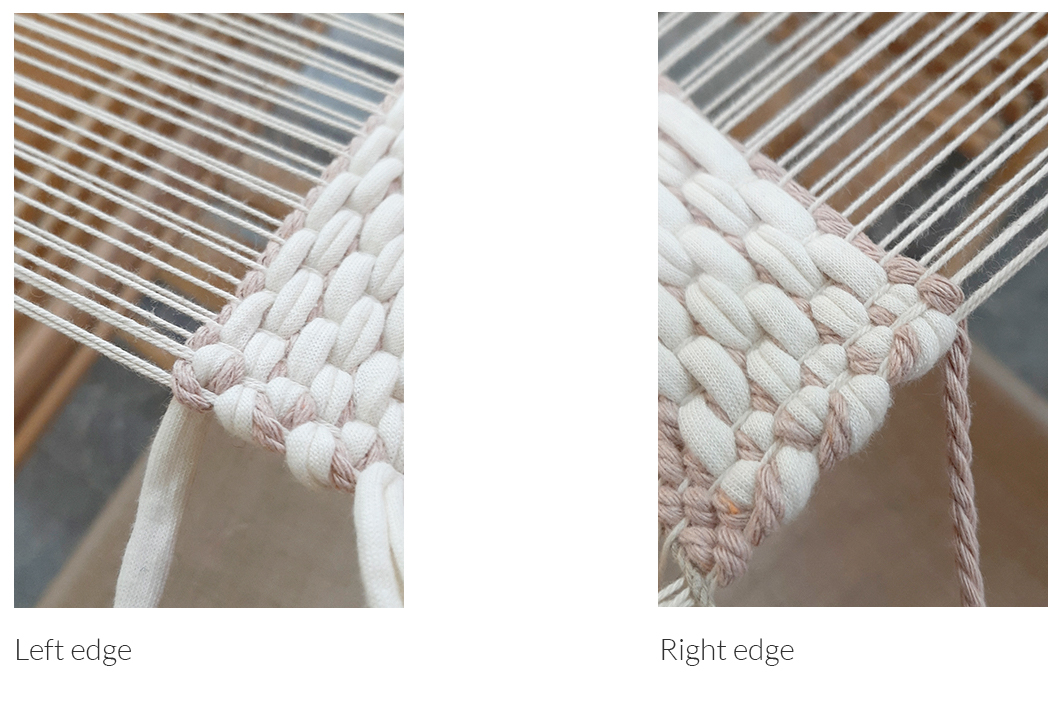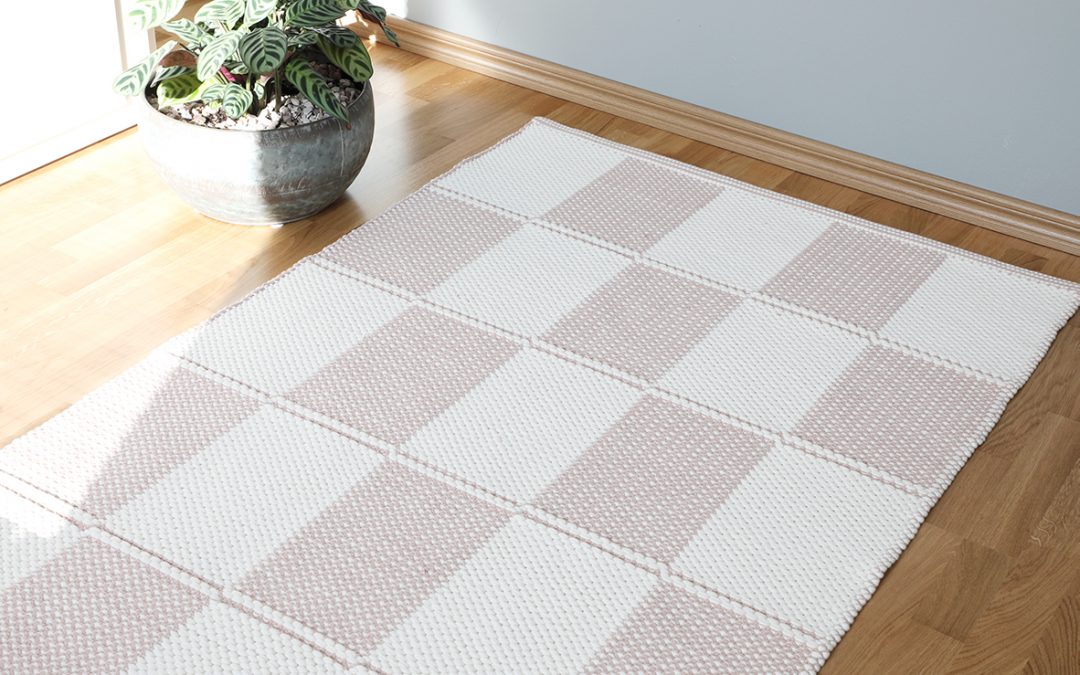| The warp | 12-ply Cotton Twine, tex 30×12, 1 kg = 2560 m, Suomen Lanka |
| Warp | width 106 cm density 2,5 threads/cm amount of warp ends 265 + 4 amount of yarn needed 600 g (= 104 g/1 m) |
| Length | 5,8 m |
| Reed | 25/1 |
| Weave | Crackle weave |
| Kude | Twisted Mop Yarn and T-shirt yarn |
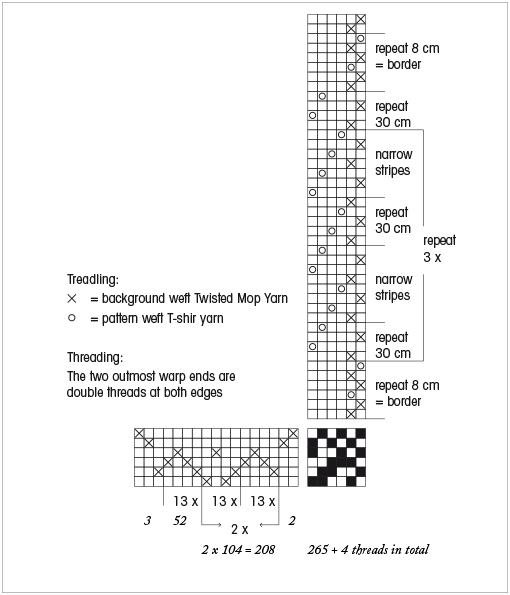
Amount of warp yarn needed
Background weft (tabby):
Moppari Twisted Mop Yarn, tex 100x10x3,
1 kg = approx. 310 m, Ø 3 mm
80 % recycled cotton 20 % polyester, Suomen Lanka
powder (color No. 4) 1,51 kg
Pattern weft:
T-shirt yarn (cotton tricot) natural white 3,22 kg
Weaving instructions
Weave 8 cm alternating three shuttles for the border: 1 Twisted Mop Yarn + 1 Twisted Mop Yarn + 1 T-shit yarn.
Weave the rug according to the treadling instructions using the Twisted Mop Yarn as a background weft and the T-shirt yarn as a pattern weft.
The woven length of one large square is 30 cm. The woven length of the rug is 244 cm including the borders.
Finishing
Tie the warp threads with tight overhand knots. Cut the ends to a length of 3 cm. Press the rug through a damp cloth.
Sew the borders by hand using 6-ply cotton twine or similar strong thread. Leave only a small inside allowance. The height of the finished border is 3,5 cm.
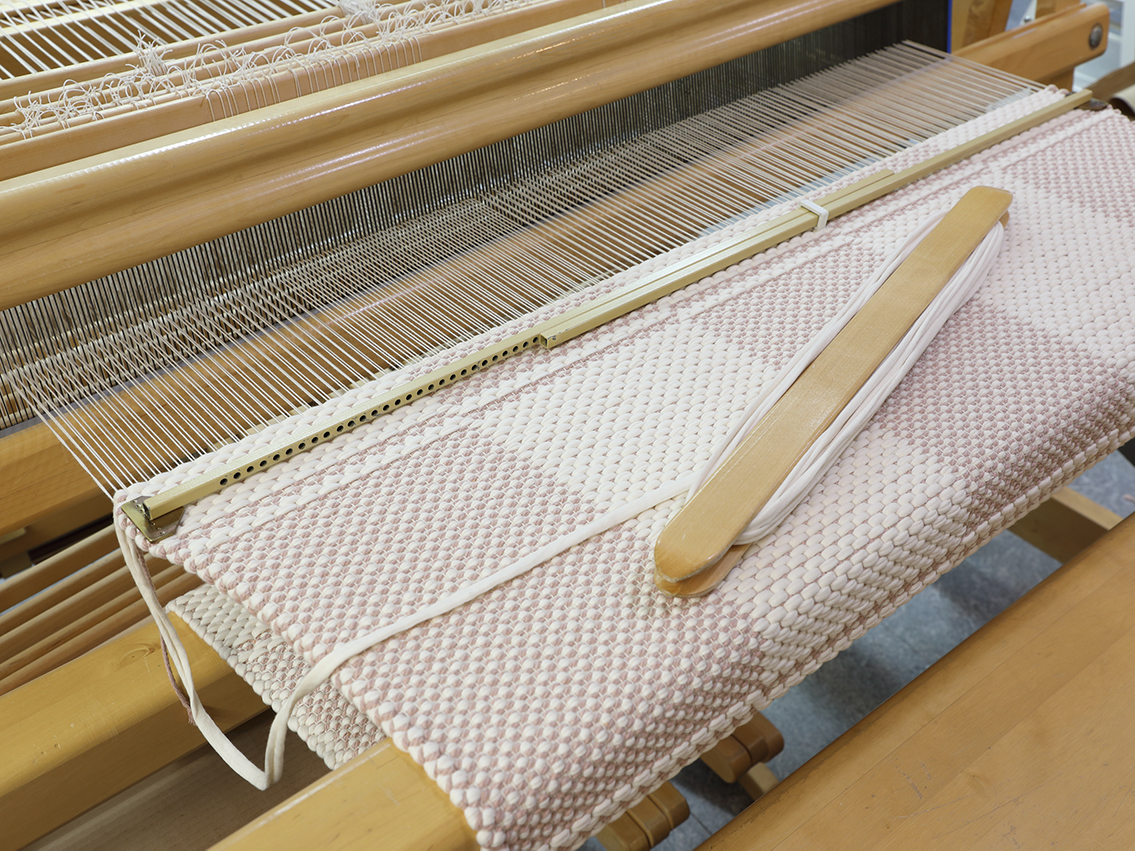
Add tabby shafts for the Selvages
There is not just one right way to thread selvedges for rugs. Different weaves need different kinds of threadings, and it also matters what kind of materials are in use.
FLOATING SELVAGES
The easiest way to have straight and neat edges is to leave the warp end (a double thread) at the outer edge away from the heddle. This works out with most weaves, but if the rug is an overshot weave with a plain weave background, it doesn’t help much. Long floats of the pattern wefts might still appear at the edges.
By trying out different threadings at the edges and different directions of the shuttling you might find a reasonable technique, but the simplest way is to add tabby shafts for the selvages. We added two tabby shafts to the checkered rag rugs on pages 30 – 33.
ADDED TABBY SHAFTS
Two extra shafts are added at the back of the main pattern shafts. Only the tabby warp threads are threaded on those shafts.
If the wefts are thin and the pattern weft is only slightly heavier than the background weft, the result will be good despite of the threading order of the tabby. When the weft materials are heavy or the difference of the pattern weft and background weft is considerable, the outmost tabby warp ends at the edges must be on different shafts to form similar edges.
The main threading of the rug must be adjusted so that the plain weave continues in a right order. The two outmost warp ends are double threads at both edges as is usual in rag rugs.
